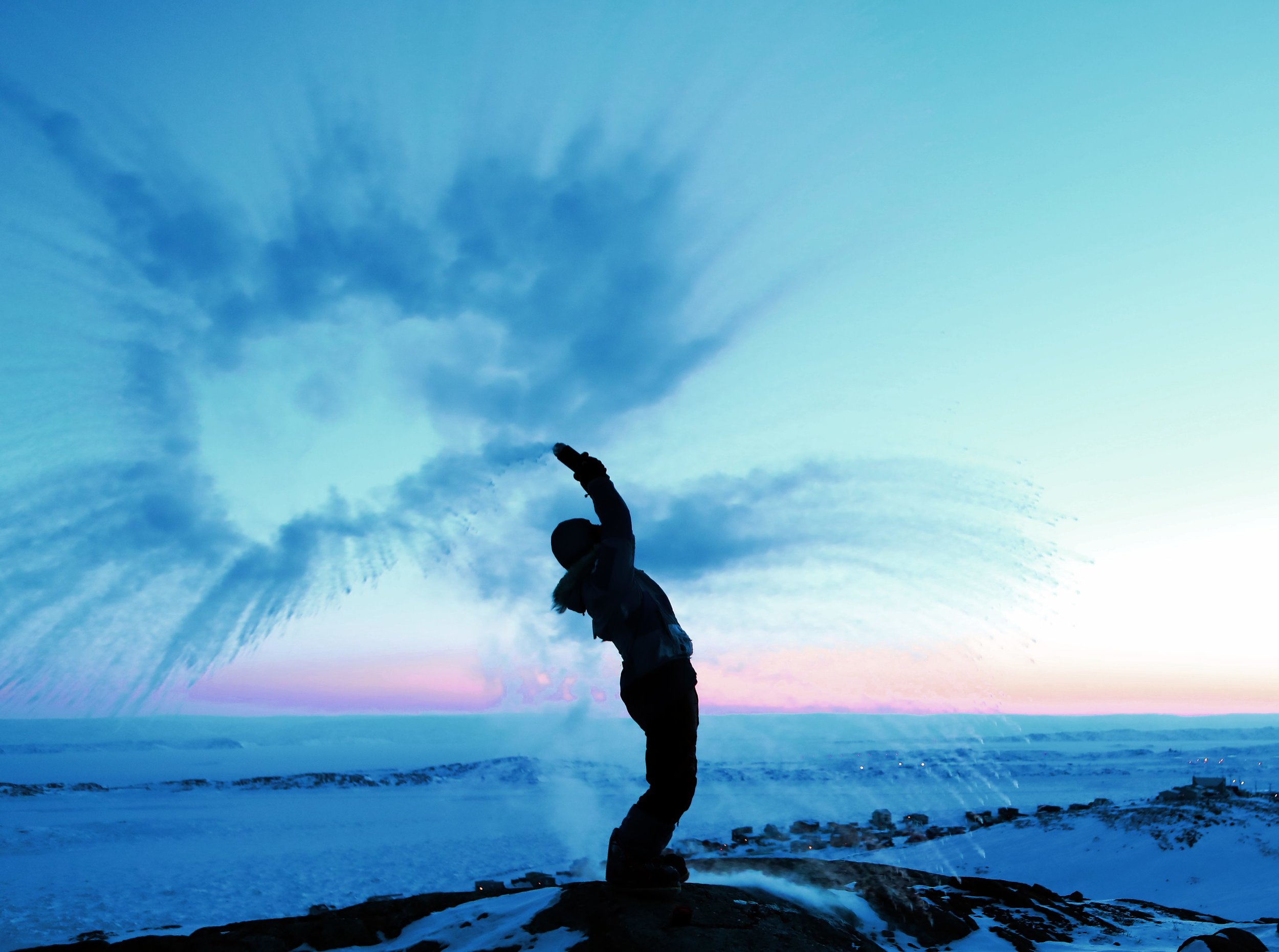As the spring light returns, three Iqaluit photographers spent the weekend sharing their knowledge on capturing creative Arctic landscape photographs with six eager participants.
Instructors Curtis Jones, Erik Boomer, and Sarah McNair-Landry share tips below, while showcasing their student’s photographs taken during the course. Curtin, Boomer (as he is known amongst friends), and Sarah are all accomplished photographers, whose work collectively has been featured in publications like National Geographic, Canadian Geographic, Vice, and many more. This was the first time these artist-adventurers put together a photography course - and they were willing to share their top tips with readers of Finding True North!

Photograph of the crew from left to right: Pam, Sarah, Dan, Curtis, Paul, Pam, Renata, and Boomer (missing Frank who took the photo). Photograph by Frank Reardon.
“I love photographing snow. For some, the winter months signal a retreat from outdoor creative pursuits, choosing to hibernate in books and fireplaces. But with a little effort and a few tips, you can beat back the cabin fever and let snowy conditions become your photographic best friend," says Curtis.
Here are a few tips to keep in mind if you want to level up your snowy photo skills:
1. Simplify composition
Use snow to simplify the composition. It’s like a big white blanket for busy landscapes and a real treat for minimalist junkies like us. Find your subject and let the snow work its magic to eliminate distracting elements.

Sometimes the best shot is not the big wide landscape, but to instead focus on the small details often missed right under our feet. Photograph by Renata Mares.
2. Shoot in black and white
Embrace the beautiful contrast of striking dark objects atop crisp white backdrops. Think about shooting white snow against dark objects, against white backgrounds. This will help you create layers and depth in your images.

With the second highest tides in the world, Frobisher Bay creates a moonscape backdrop. Photograph by Rae Sirotic.
3. Shoot a little over exposed
Your camera will read a snowy scene as too bright and try to grey everything out. To get nice bright white snow, add a 1/3 to 1/2 stop exposure compensation. If you're not sure how to do this, dust off that old camera manual you’ve been using to prop up the coffee table and get to work.

An early arctic morning, this image captures the cold mood of the arctic. Photograph by Frank Reardon.
4. Motivate
It’s no secret that the northwest winds that blow across Frobisher Bay can drop the temperature well past -50C in the winter. And standing still while adjusting a tri-pod to capture a desolate landscape can be a challenge.
The key to taking beautiful landscape photos in a harsh environment is one thing: motivation. It doesn’t matter how well you know the settings on your new camera, if you don’t get out there and try – you’ll never get that shot.

The northern lights are often uncooperative, moving or disappearing as soon as the shot is framed. They take patience and persistence to shoot well.Photograph by Paul Billowes.
5. Shoot during the golden light
Yes, the instructors forced their six brave participants to crawl out of bed at 4:30 on a Sunday morning to be on location by 5:15am (after shooting northern lights late into the night). But that is what you need to do to capture the golden light.

The strong winds dropped the wind chill down to -42C, as we waited for the sun to rise. Photograph by Pamela Wood.
6. Have fun!
Have fun, play around, try new tricks. And most importantly get out there and shoot.

Photographing a cold sunset, Erik Boomer sacrifices the hot chocolate for the shot. Photograph by Daniel Coulombe.
What are your top Arctic photography tips? Let us know in the comments!
